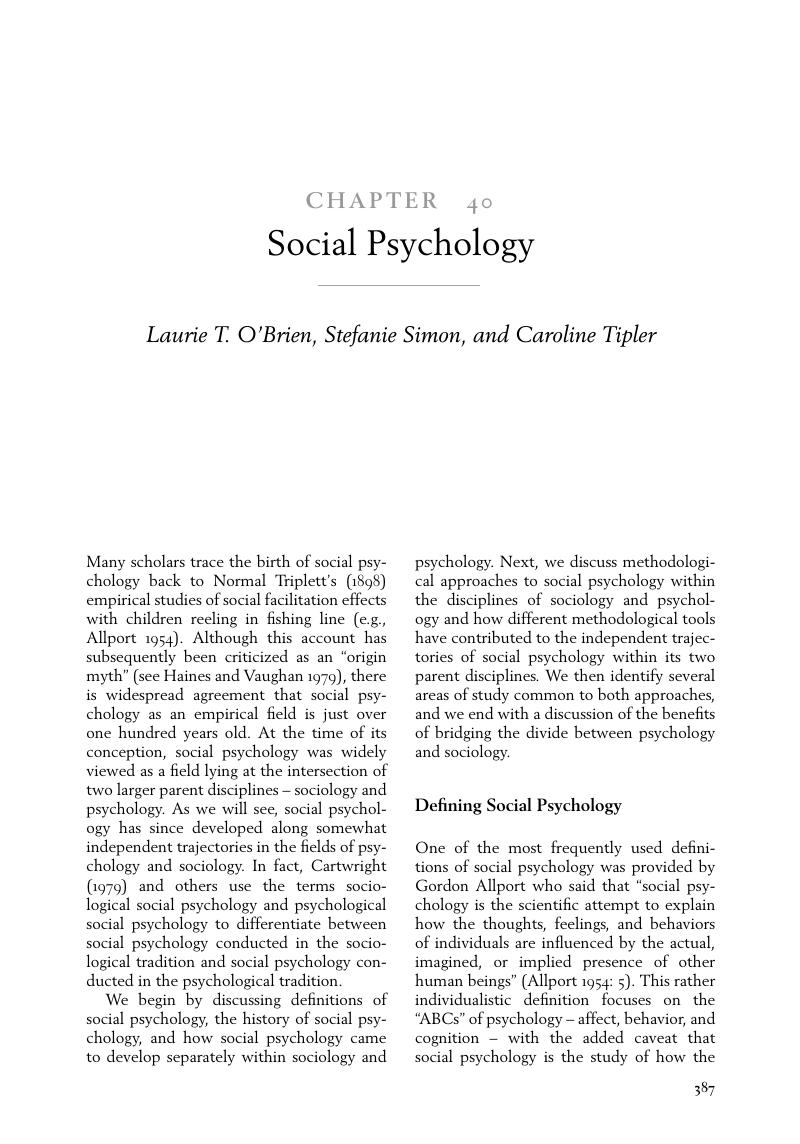Book contents
- The Cambridge Handbook of Sociology
- The Cambridge Handbook of Sociology
- Copyright page
- Contents
- Figures
- Tables
- Contributors
- Introduction
- Part I Perspectives on Race
- Part II Perspectives on Social Class
- Part III Feminist Perspectives
- Part IV Specialty Areas
- Part V The Sociology of the Self
- Part VI The Sociology of the Life Course
- Part VII Culture and Behavior
- Part VIII Sociology's Impact on Society
- Part IX Related Fields
- Chapter 37 Criminology
- Chapter 38 Criminal Justice Studies
- Chapter 39 Social Work
- Chapter 40 Social Psychology
- Chapter 41 Sociology of Translation
- Chapter 42 Women and Gender Studies: Its Origins and Intersections with Sociology
- Index
- References
Chapter 40 - Social Psychology
from Part IX - Related Fields
Published online by Cambridge University Press: 07 September 2017
- The Cambridge Handbook of Sociology
- The Cambridge Handbook of Sociology
- Copyright page
- Contents
- Figures
- Tables
- Contributors
- Introduction
- Part I Perspectives on Race
- Part II Perspectives on Social Class
- Part III Feminist Perspectives
- Part IV Specialty Areas
- Part V The Sociology of the Self
- Part VI The Sociology of the Life Course
- Part VII Culture and Behavior
- Part VIII Sociology's Impact on Society
- Part IX Related Fields
- Chapter 37 Criminology
- Chapter 38 Criminal Justice Studies
- Chapter 39 Social Work
- Chapter 40 Social Psychology
- Chapter 41 Sociology of Translation
- Chapter 42 Women and Gender Studies: Its Origins and Intersections with Sociology
- Index
- References
Summary

- Type
- Chapter
- Information
- The Cambridge Handbook of SociologySpecialty and Interdisciplinary Studies, pp. 387 - 398Publisher: Cambridge University PressPrint publication year: 2017



